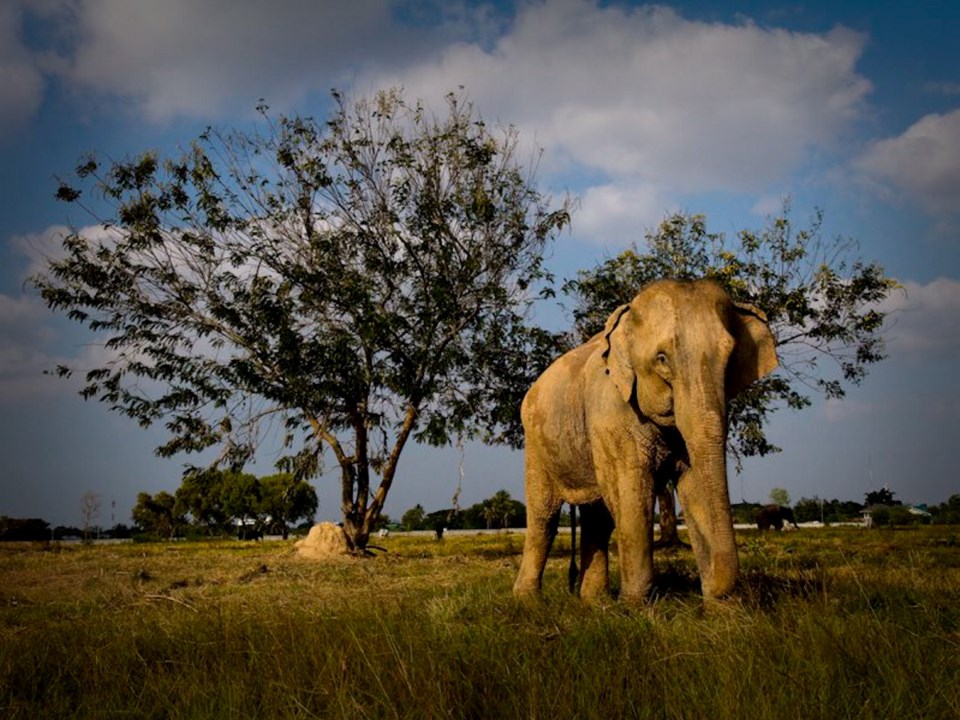It’s not uncommon for TV news crews to become embedded with military units to report from war zones in global hotspots.
Patricia Sims prefers being embedded with elephants and the culture surrounding them in the jungles of Thailand.
The Victoria filmmaker and her production partner Michael (Zo) Clark have spent the past 18 months doing just that to make Return to the Forest, their half-hour documentary being showcased tonight at 9:45 at Empire Capitol 6 as part of the mid-length films program My Real Home.
The film focuses on the Elephant Reintroduction Foundation, a royal initiative launched in 2002 by Thailand’s Queen Sirikit to reintroduce captive elephants into the wild. The film is part of her four-year process to complete Elephants Never Forget, their feature-length documentary on the plight of endangered Asian elephants and their fragile relations with humans.
Interspersing footage from the bustling streets of Bangkok to Thailand’s tropical forests, their self-funded feature centres on a poor young mahout (elephant keeper) and his street elephant who eke out a living in Bangkok’s suburban wastelands.
The story is used as a foundation for a comprehensive exploration of the threats from poaching to exploitation faced by these huge, highly intelligent creatures used in warfare, logging, entertainment and tourism. The film also explores the impact the elephant’s newfound freedom has on the man who relied on this magnificent creature economically.
Sims’s deeper, longer documentary now in post-production also takes a closer look at elephants from a global perspective.
Despite the films’ differences, both aim to build awareness of the elephant’s plight and potential solutions.
“It’s easy to get bummed out and drawn into all the horrible things happening around the world,” says the former Citytv producer, noting 100 elephants are being killed daily in Africa by ivory poachers.
“I always try to find that positive solution.”
Sims found her hopeful story for Return to the Forest two years ago after her “serendipitous” meeting with representatives of the charitable foundation that rescues captive elephants from their fates in zoos, as street beggars or sideshow attractions.
The organization restores natural habitats with indigenous plants and wildlife the resilient creatures have readily adapted to.
“We went kind of undercover to better understand the socio-economic reality of that, and how those whose livelihoods depended on the elephants had changed,” Sims said. “So not only were the elephants the victims, so were these people.”
Elephants, with brains similar to humans, are an important element of Thai culture, she said.
“Elephants are like the gardeners in the forest eco-system,” adds William Shatner in the taut, beautifully photographed and revelatory film he eloquently narrates. “They are alien in our world, and endangered in their own.”
By returning elephants to forests, many of which have been devastated by logging, both become sustainable, Return to the Forest asserts. It’s accompanied by footage of elephants — just a few of many nationwide that suddenly found themselves homeless when logging was banned in 1990 — impulsively cutting grass and fertilizing the lush natural landscape.
Return to the Forest features Nong-Mai, an elephant that no longer has to wander the streets begging for sugar cane since being acquired by the foundation as part of its mission to replenish the dwindlng elephant population.
One of the film’s most moving signs of hope is when Jaroonee, after a 22-month pregnancy, gives birth in Sublangka sanctuary.
“We waited for that to happen for months,” recalled Sims, who began filming with the foundation in the fall of 2011. A major motivation was learning that the foundation’s work was being done quietly, the only initiative of its kind the world, she said.
Another production highlight was working with Shatner, whose narration was recorded in Los Angeles while Sims and Clark were patched through from Chiangmai, Thailand.
“He did everything pretty much in one take. It was such a thrill to work with someone as top-drawer as that,” recalled Sims, who contacted him because of his elephant advocacy.
Her next step on the road to the international release of Elephants Never Forget is an IndeGogo crowdfunding campaign to raise completion funds. It begins Feb. 20, during the lead-up to the March 3 Convention on International Trade in Endangered Species (CITES) in Bangkok. A hot topic will be a debate over whether the ivory trade should be legalized, as some countries have advocated.
